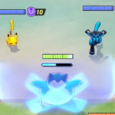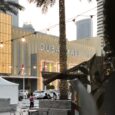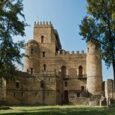When In Manila, it has become a trend for history buffs and travel junkies to take a day off and see the historical sites, which our nation’s capital has in the dozens. Some do these on their own, visiting famous tourist spots such as Casa Manila and Fort Santiago, but many others opt for the more in-vogue way of exploring the city’s antiquities: taking a guided walking tour. Groups and tour programs such as Old Manila Walks and Carlos Celdran’s Walk This Way are definitely tourist favorites, giving their takes on some of Manila’s historic places, but for those who are out for a unique view of Manileño history, a little-known tour promises a walking tour experience like no other.
The Filipinas Stamp Collectors Club does not sound like a group that would be offering walking tours, much less free ones. Their primary goal, as the name suggests, is to promote the popular hobby of philately, which is a fancy word for “stamp collecting.” But in 1998, the year of the Philippine Centennial Celebration, the group had a brainwave–why not take advantage of the historical hype that surrounded the 100th birthday of the Philippines and give tours about the Manila that few ever get to see; a Manila memorialized forever in postcards and postage stamps and that, in many ways, has been lost to time. Thus, the FSCC Postal Heritage and Metropolitan Theatre Tours were born, giving a distinct view of a little-toured part of Manila.
The FSCC’s monthly tours (happening every third Sunday of the month) gained some notoriety after adding the Metropolitan Theatre to their itinerary. Considered one of Manila’s most haunted locations, “the Met,” as it is often called, has been sitting in ruins for years, awaiting a restoration effort. Bloggers in search of some supernatural thrills have favored the FSCC free tour because it provides what other tour groups cannot: a tour of the inside of the supposedly haunted building–a building that is supposedly also a playground for photography enthusiasts with its old-world charm. I have to admit that it was for those reasons that the FSCC Postal Heritage and Metropolitan Theatre Tour caught my attention, leading me to quickly sign up for their November tour date.
Memories of a grander time: View from Plaza Lawton/Liwasang Bonifacio of the neo-Classical Philippine Post Office Building, designed by architect Juan Arellano.
It was blazingly hot on the afternoon of November 20, when I and my partner in crime, my mother, turned up at Plaza Lawton/Liwasang Bonifacio to assemble for the free tour. While waiting for our tour guide, Mr. Lawrence Chan, I managed to snap a photo of the Post Office Building, a neoclassical giant, and one of the stops on our walking tour for the day. I had a bit of a wait, but it didn’t feel quite so long since I got to play “Citizen Paparazzi” at a nearby television shoot for Robin Padilla‘s serial TV show. I managed to steal a shot of the man himself, taking five after being put through his action-hero paces.
Papa-paparazzi: A stolen shot of actor Robin Padilla on location for his TV series, filmed near Plaza Lawton/Liwasang Bonifacio.
A few minutes after I’d managed to grab photos of Robin Padilla, Sir Lawrence showed up, and one by one the rest of our tiny tour group–some of whom were actually fellow spectators to the television shoot–assembled in the square, which turned out to be the very first stop on our tour. Sir Lawrence was careful to mix in factual details–and views of stamps associated with the history, of course–with historical gossip, which is always juicy no matter how old.
A funfact I learned at Plaza Lawton? That Queen Isabella II, the Spanish Queen featured on our coinage and even on one of our first postage stamps, was known as “The Bitch” for her notorious number of lovers.
The man with the plan: FSCC‘s brilliant tour guide, Lawrence Chan, in action, explaining the history of stamps at Plaza Lawton/Liwasang Bonifacio.
After Plaza Lawton, we made a quick trip across the street to the Philippine Post Office Building, where we stood in the breezy outdoor “hallway” created by the neo-Corinthian colonnades. Sir Lawrence expounded on the architectural style–neo-Classical–the architect–Juan Arellano–and on the particular features of the building, but he also had really interesting old postcards featuring Jones Bridge and the Philippine Post Office Building back when they were still brand new. My favorite of his “artifacts,” however, was an old envelope featuring a sketch of Rajah Sulayman, the famous rajah of Manila. The colors were still very vivid.
Think Greek: The neo-Corinthian colonnades of the Philippine Post Office Building, providing a breezy shelter for our tour group.
Mint condition: A perfectly preserved envelope displaying an old icon of Rajah Sulayman, former rajah of Manila.
We went around to the back entrance in order to see main lobby of PhilPost, where there was a stamp exhibit. This was interesting, but what caught my attention the most was that the PhilPost still had a telegraph machine! But the telegraph apparently was not the only relic of the bygone age: according to Sir Lawrence, the PhilPost is apparently home to quite a few “spirit workers”–faithful postal servants who, after their passing, continue to serve. I didn’t see anything, but it was strangely chilly in the building even though the sun was burning outside.
Know the code: A relic of bygone means of communication, PhilPost still has a telegraph station.
After we finished our tour of PhilPost, we cooled off in the PhilPost Museum and Library, where we attended a lecture on stamp collecting and got to peek at a live auction. The things up for bid were an odd mix, ranging from international phonecards to old manga to a bill dating back from World War II with the monetary value of one peso! You can tell it’s from World War II, or just after it, because of the mark in the corner which reads “Victory Series.” I’d seen the giant coins before, but never a bill for such a small amount…but then again, back then, one peso wasn’t exactly a “small amount.”
It’s all about the green (or yellow): A post-war “Victory” one peso bill, up for auction by the members of the FSCC.
By the time it was cool enough to go back outside, we did not have much time to go through the whole itinerary–which, according to Sir Lawrence, has made some tours last until seven PM–so we made a beeline for the big one: The Metropolitan Theatre. A sprawling art deco building, in its heyday The Met was the place for Manila’s glitterati to see and be seen. The years, however, have not been kind to this building, and it has since fallen into complete ruin–a shame, because the space has wonderful acoustics, and could even stand toe to toe with the CCP if given a chance. It was declared a National Heritage Site, but as of today the restoration effort remains to be completed.
A grande dame of a bygone age: The Metropolitan Theatre is a beautiful art deco ruin.
Abandoned for years, The Met has earned a reputation for being “haunted.” While traveling in it, I could see why.
Aside from the occasional tours by FSCC (which is the only group that has a permit to conduct tours within the theatre), the place has lain deserted for years. Inside, tour-goers are required to carry flashlights, as the theatre’s electricity is often shut off, save for a single light on the stage, ironically called, in theatre parlance, a “ghost light.” Sir Lawrence told us stories of people who had felt hands grabbing at their feet, or had the hair on the back of their neck stand on end. He even warned us to take lots of shots, just in case a few didn’t materialize, as had happened when other photographers toured the place. Apparently, the ghosts are camera-shy.
A remembrance of things past: The haunting remains of The Metropolitan Theatre‘s former glory. From top–the ruins of the rehearsal hall where my mother remembers taking jazz classes, the stage of The Met with its flooded orchestra pit and the burning “ghost light,” the grand ballroom where theatre receptions were held, and an old vaudeville poster, found in one of the ruined rooms.
Thankfully, they chose not to tangle with me and my Canon G12, “Ed.” I went completely trigger-happy in the hauntingly beautiful Met ruins, and went completely wild when we were let up onto the roof to get views of the sunset and of Manila. The spires of The Met made it look like we weren’t in Manila anymore, but somewhere in Eastern Europe instead. The distant tower of Manila Cathedral in the distance added to this “European” feel.
Dreaming spires: Details of the rooftop of The Metropolitan Theatre, complete with mosaic tile detail.
Me caught in a candid moment on the roof of The Metropolitan Theatre, watching the sun set.
Our last stop was the Arroceros Forest Park, one of the last forest reserves in Manila. The Philippine equivalent of what the Meiji Jingu Shrine is to Tokyo, the Arroceros Forest Park is a peaceful retreat from the bustle of the city. While we were there, a student group was having “open mic” performances in an open square, and I paused to eavesdrop before looking around for birds: Sir Lawrence told me that Arroceros Forest Park was a favorite of birdwatchers who went on the FSCC tour. Sadly, there were no more birds at this hour–apparently they go to sleep–but there was a lovely sunset view of the river.
A sunset view: Taken from the riverside of Arroceros Forest Park, a gorgeous sunset reflected in the water.
Time to say goodbye: A debrief by Lawrence Chan of the FSCC in Arroceros Forest Park.
After a final debriefing by the riverside, we each went our separate ways, with me and my mom returning to the PhilPost complex, where we’d parked. But before heading to the car, I snapped another shot of where the tour had began: Plaza Lawton, lit up by the bright lights of the fountain in the twilight.
All of the lights: The view of the Philippine Post Office Building from Plaza Lawton/Liwasang Bonifacio, at night.
The ghosts may not have felt like coming out to play, but FSCC’s Postal Heritage and Metropolitan Theatre Tour was definitely worth the five or so hours I devoted to it. From gorgeous architectural ruins to interesting tidbits of historical gossip, the tour definitely delivered on its promise to take me through a side of Manila I didn’t even know about. I definitely will take the tour again (hopefully the second time around we might get farther along in the itinerary: the fun part about FSCC’s tour is that the itinerary constantly evolves) So When In Manila, if you’re looking for a day of adventure without having to be too adventurous about your wallet, why not book a free tour with the Filipinas Stamp Collectors’ Club? You will definitely come out viewing the capital city with new eyes.
Interested in joining the tour? Inquire with:
Mrs.Josie Tiongson – Cura – ( 0917-9800708 / 735-5001 )
Monday to Saturday 1pm to 5pm only
Ms. Nena De Guzman – ( 527-00 -96) Postal Museum and Library
Monday to Friday 8am to 5pm only for parking instruction.
Mr.Lawrence Chan – ( 0919-3901671) Email:L_rence_2003@yahoo.com.
Filipinas Stamp Collectors’ Club Takes On a Different Side of Manila With Their Postal Heritage and Metropolitan Theatre Tours























